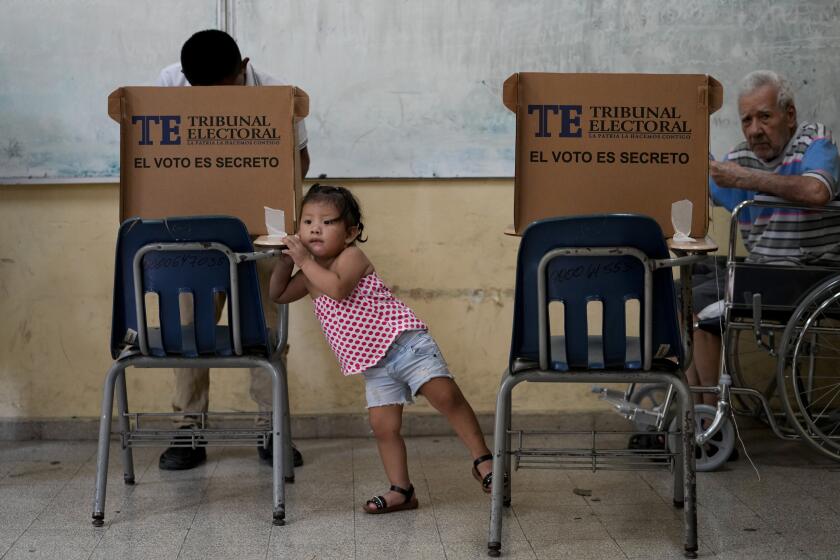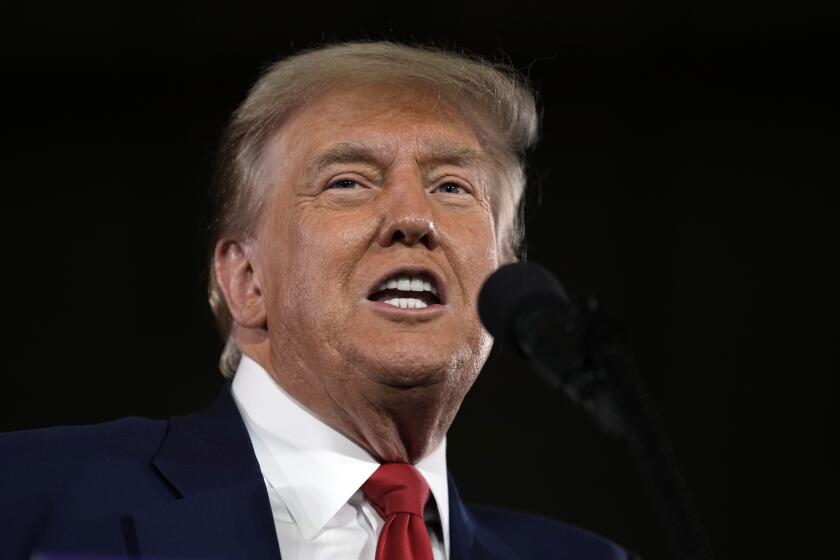Airport Shoe Checks Fluster Many Fliers
There is little that annoys frequent fliers more than the Transportation Security Administration’s ambiguous shoe policy at airport security checkpoints.
Although the removal of shoes is supposed to be voluntary, passengers who fail to do so can find themselves subjected to secondary screening, which can include a full body pat-down.
The agency’s shoe policy is the most common complaint on mytravelrights.com, the website of the Consumer Travel Rights Center.
Last month at Los Angeles International Airport, I was forced to undergo a secondary screening after refusing to voluntarily remove my tennis shoes. Later, I wanted to find out how this policy was created in the first place. I ran into roadblocks at nearly every turn.
Many believe that it was the Richard Reid episode in December 2001 that triggered the increased scrutiny of shoes
Reid tried to blow up one of the two bombs concealed in his shoes on an American Airlines flight from Paris. The Briton, who was prevented from boarding the same flight a day earlier because of his suspicious behavior, was trying to light the fuses with matches when he was spotted by a flight attendant. Reid was restrained by airline personnel and passengers.
Once on the ground, he was arrested and later pleaded guilty in U.S. District Court to eight felony counts in connection with his attempt to blow up the plane. Reid was sentenced to three life terms plus 110 years in prison.
During the flight he tried to blow up, Reid was in a window seat. Had one of the bombs been detonated against an outer wall of the plane, it would have put a hole in the side of the Boeing 767, said FBI Supervisory Special Agent Greg Carl, chief of the explosives unit at the agency’s laboratory. Carl was the forensic examiner who worked on the Reid case.
Because of the type of fuse that was in the bombs, it was very difficult to light using matches, Carl said. A lighter might have done the trick, he said.
The FBI is not aware of any attempted shoe bomb attacks on planes other than Reid’s, Carl said.
I asked the Transportation Security Administration for some documents regarding the implementation and details of its shoe inspection policy, but I was denied access to them because of security reasons.
But the agency agreed to talk to me. I asked whether its shoe policy was linked directly to the Reid case.
“I think so, but I couldn’t tell you the exact date,” said Mike Restovich, assistant administrator for security operations at the agency and a retired Secret Service agent from Texas.
Restovich also has been subjected to the vagaries of the policy. He was once instructed by an agent to remove his shoes, even though they did not fit the profile. He says that it is a training issue.
“We know how the public hates taking its shoes off,” he said. “We’re big enough and ugly enough to know we really need to assess and reassess” the agency’s policies.
Restovich said he was unaware of any incident in which his agency had found explosives in the sole of a shoe nor of any attempt in the U.S. to smuggle a shoe bomb onboard an aircraft.
The Europeans take a more measured approach to the issue of shoe security. In Europe, there is no blanket policy about removing shoes before going through a metal detector or for requiring passengers to undergo secondary screening if their shoes fit a certain profile.
However, authorities of each country, airlines and security staff can force passengers to remove their shoes “for high-risk flights or due to suspicious behavior or simply for a random check,” said James Bradbury, policy manager for Europe for Airports Council International, a trade association in Geneva.
“It would seem prudent to keep the passenger on his toes” by having some security procedures that passengers and potential terrorists can’t predict, Bradbury said.
A certain degree of risk is, of course, unavoidable in travel.
“I think it is a mistake to say that risk mitigation to any degree is worth any price,” said Jack McGeorge, a former Marine Corps explosive ordnance disposal specialist who is president of Public Safety Group, a Woodbridge, Va., consulting firm. “A very fair question is, how much of a deterrent versus how much of a hassle?”
Last month, NBC reported on a classified Government Accountability Office report that federal investigators were able to carry materials needed to make a homemade bomb through security screening at 21 airports. The Transportation Security Administration won’t comment on the report.
In a statement, the agency said, “Detecting explosive materials and [explosive devices] at the checkpoint is TSA’s top priority.”
So is the agency looking for the needle when it should be trying to find the haystack?
“It’s one of those deals where we’ve got to find the right answer,” Restovich said. “The policy as it is today actually makes sense.”
*
Business Itinerary appears every Saturday. Contact James Gilden at james.gilden@latimes.com.
More to Read
Start your day right
Sign up for Essential California for news, features and recommendations from the L.A. Times and beyond in your inbox six days a week.
You may occasionally receive promotional content from the Los Angeles Times.






